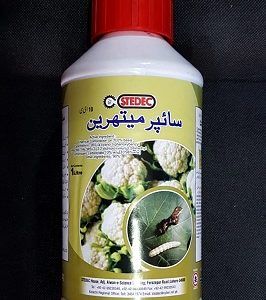Cockroaches are one of the most persistent and annoying pests that invade our homes, offices, and restaurants. These creepy-crawly insects have a reputation for being hard to kill, and they seem to have an uncanny ability to detect and avoid traps and baits.
But why is it so difficult to get rid of cockroaches, even with the use of bait gels? In this article, we will explore the reasons behind cockroaches’ aversion to bait gels and provide some tips on how to use these products effectively.

How Bait Gels Work
Bait gels are one of the most effective methods of controlling cockroaches.
- They are designed to attract cockroaches and contain a poison that kills them.
- Bait gels are applied in small dots or lines in areas where cockroaches are likely to feed or travel.
- Cockroaches will consume the bait gel and carry it back to their nest, where other cockroaches will also consume it.
- This is known as secondary poisoning and is an effective way of controlling cockroach infestations.
Active Ingredients in Bait Gels
Bait gels contain one or more active ingredients that are toxic to cockroaches. The most commonly used active ingredients in bait gels include fipronil, hydramethylnon, and indoxacarb.
These ingredients work by disrupting the nervous system of cockroaches, causing them to become paralyzed and eventually die. Bait gels often also contain attractants such as sugars, proteins, and fats to entice cockroaches to consume the bait.
Advantages of Using Bait Gels
There are several advantages to using bait gels for cockroach control.
- Bait gels are easy to use, and they do not leave any residue or odor.
- They are also safe to use around humans and pets, as the active ingredients are only toxic to insects.
- Additionally, bait gels are effective at controlling entire cockroach populations, as they can be shared among the colony through secondary poisoning.
How to Use Bait Gels Effectively
To use bait gels effectively, it’s essential to place them in areas where cockroaches are likely to feed and travel.
- This includes areas such as behind appliances, in cabinets, and under sinks.
- It’s also important to use fresh bait gels and replace them regularly, as they can become less attractive to cockroaches over time.
- It’s recommended to use bait gels in combination with other cockroach control methods, such as trapping and sanitation measures.
Why Cockroaches Avoid Bait Gels
Despite the effectiveness of bait gels, some cockroach populations have become resistant to them. There are several reasons why cockroaches may avoid bait gels or become resistant to them.
Resistant Strains of Cockroaches
Some cockroach populations have developed resistance to certain types of bait gels. This is due to genetic changes that occur within the population over time, which allow them to tolerate or detoxify the active ingredients in the bait gels.
In these cases, it’s important to use bait gels that contain different active ingredients or to use alternative methods of control.
Poor Bait Placement
Another reason why bait gels may be ineffective is due to poor placement. Bait gels should be placed in areas where cockroaches are likely to feed or travel, such as along baseboards and in corners.
If bait gels are placed in areas that are not frequented by cockroaches, they may be less effective.
Other Food Sources Available
If there are other food sources available to cockroaches, they may be less likely to consume bait gels. Cockroaches are opportunistic feeders and will choose the most attractive food source available.
If there are other food sources such as crumbs or garbage available, cockroaches may ignore bait gels.
Understanding Cockroaches’ Behavior
Before we dive into why cockroaches avoid bait gels, it’s essential to understand their behavior. Cockroaches are nocturnal insects that are attracted to warm, dark, and humid environments.
They can feed on almost anything, including food crumbs, grease, garbage, and even each other. Cockroaches are omnivorous, meaning that they consume both plant and animal matter. They have a keen sense of smell and taste, which helps them locate food sources.
Cockroaches’ Sense of Smell
Cockroaches have an excellent sense of smell and can detect food sources from a distance. They use their antennae to smell, taste, and touch their surroundings, which helps them navigate their environment.
Cockroaches are attracted to the scent of fermenting and decaying food, which is why they are commonly found in kitchens, garbage areas, and sewers.
Cockroaches’ Sense of Taste
Cockroaches have a unique sense of taste that allows them to distinguish between different types of food. They have taste receptors on their mouthparts, which helps them identify sweet, bitter, and sour flavors.
Cockroaches are attracted to sweet-tasting foods, which is why bait gels often contain sugar-based attractants.
Cockroaches’ Feeding Habits
Cockroaches are opportunistic feeders, which means they will eat whatever is available to them. They are also known to be cannibalistic and will feed on dead or injured cockroaches.
Cockroaches prefer to feed in the dark, and they can go without food for up to a month if water is available. However, if food is scarce, they will feed during the day and become more active.
Conclusion
Bait gels are an effective method of controlling cockroach infestations. They work by attracting cockroaches with sweet-tasting attractants and then poisoning them with toxic active ingredients.
However, some cockroach populations have become resistant to bait gels, and they may be less effective if placed in the wrong areas or if other food sources are available.
It’s important to use bait gels in combination with other control methods and to regularly replace them to ensure maximum effectiveness.
FAQs
-
Are bait gels safe to use around pets and children?
Yes, bait gels are safe to use around pets and children as the active ingredients are only toxic to insects.
-
How often should I replace bait gels?
Bait gels should be replaced every three to six months, or when they become less attractive to cockroaches.
-
Can cockroaches become immune to all types of bait gels?
Cockroaches can develop resistance to specific types of active ingredients in bait gels, but there are usually other active ingredients that can be used to control resistant strains.
-
Can bait gels be used as the sole method of cockroach control?
While bait gels can be effective at controlling cockroach populations, it’s recommended to use them in combination with other control methods such as trapping and sanitation measures.
-
What should I do if bait gels are not working to control my cockroach problem?
If bait gels are not effective at controlling your cockroach infestation, it’s recommended to consult with a professional pest control service to develop a customized control plan.
They can use specialized tools and methods to target the specific type of cockroach and level of infestation.

Dr. Ahmed is a renowned entomologist with over 20 years of experience in studying insects. He obtained her Bachelor’s degree in Biology from the University of Punjab, and then completed his Master’s and Ph.D. in Entomology from the University of the Punjab.
Dr. Ahmed has conducted extensive research on the behavior, ecology, and evolution of insects. His work has been published in numerous peer-reviewed scientific journals and has been presented at international conferences. He has also served as a consultant for various organizations, including government agencies and private companies.







 Cypermethrin 10% EC
Cypermethrin 10% EC 